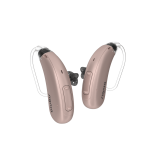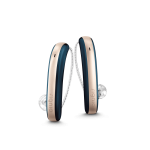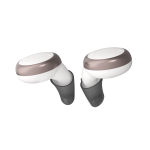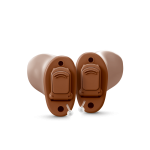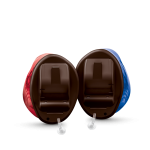Understanding Cookie Bite Hearing Loss: Causes, Signs, and Treatment Options

Understanding Cookie Bite Hearing Loss: Causes, Signs, and Treatment Options
Hearing loss can take many forms, and one unique type is
known as "cookie bite" hearing loss. This peculiar name originates
from the distinctive shape of the audiogram results, which resembles a U with a
bite taken out of it. In this article, we will delve into what cookie bite
hearing loss is, how common it is, its potential causes, signs to watch for,
and available treatment options.
Is Cookie Bite Hearing Loss Common?
Cookie bite hearing loss, also referred to as mid-range
hearing loss, is relatively rare. It falls under the category of sensorineural
hearing loss (SNHL), which is characterized by damage to the inner ear or
auditory nerve, as opposed to any ear blockage. Research suggests that
mid-frequency hearing loss accounts for only about 0.7-1% of all SNHL cases.
Causes of Cookie Bite Hearing Loss
Genetics: The primary cause of cookie bite hearing loss is
genetic. Individuals with a family history of this condition are at a higher
risk of developing it. It may manifest at birth or emerge later in life due to
specific genetic factors.
Acoustic Neuroma: In rare cases, cookie bite hearing loss may be linked to the presence of a benign tumor called an acoustic neuroma. This tumor can affect the auditory nerve and lead to hearing difficulties.

Signs of Mid-range Hearing Loss
Cookie bite hearing loss predominantly affects the ability
to hear mid-frequency sounds. Since many elements of human speech fall within
this range, a common sign of this type of hearing loss is difficulty
understanding spoken language. Conversations at work or social gatherings may
become challenging to follow.
It's essential to note that individuals with mid-range
hearing loss can often hear high and low-frequency sounds relatively well.
Therefore, while speech may be audible, it may not sound entirely clear.
Additionally, because hearing loss can be gradual, it is not uncommon for
family members or close friends to notice the issue before the affected
individual does.
Possible Treatment Options
If you suspect that you or a loved one may be experiencing
hearing difficulties, the first step is to schedule a hearing test with an
audiologist. These tests are quick, and painless, and provide valuable insights
into the type and severity of hearing loss.
For individuals with cookie bite hearing loss, hearing aids
are a commonly prescribed solution. These devices are designed to enhance the
perception of sounds in the mid-frequency range. By wearing hearing aids,
individuals can improve their communication abilities, regain clarity in
conversations, and enjoy sounds they may have been missing.
Hearing aids are available in various styles and
technologies to suit individual needs and preferences. An audiologist can help
determine the most suitable hearing aid based on the specific characteristics
of your hearing loss.
In conclusion, cookie bite hearing loss, though relatively
uncommon, presents unique challenges related to mid-frequency sound perception.
Genetics plays a significant role in its development, and early detection
through hearing tests is crucial. Fortunately, modern hearing aid technology
offers effective solutions to improve communication and overall quality of life
for individuals with this type of hearing loss. If you suspect hearing
difficulties, don't hesitate to seek professional evaluation and explore the
available treatment options to enhance your hearing experience. Visit
www.aanviihearing.com or call us on 96 5839 5839 for more information.

